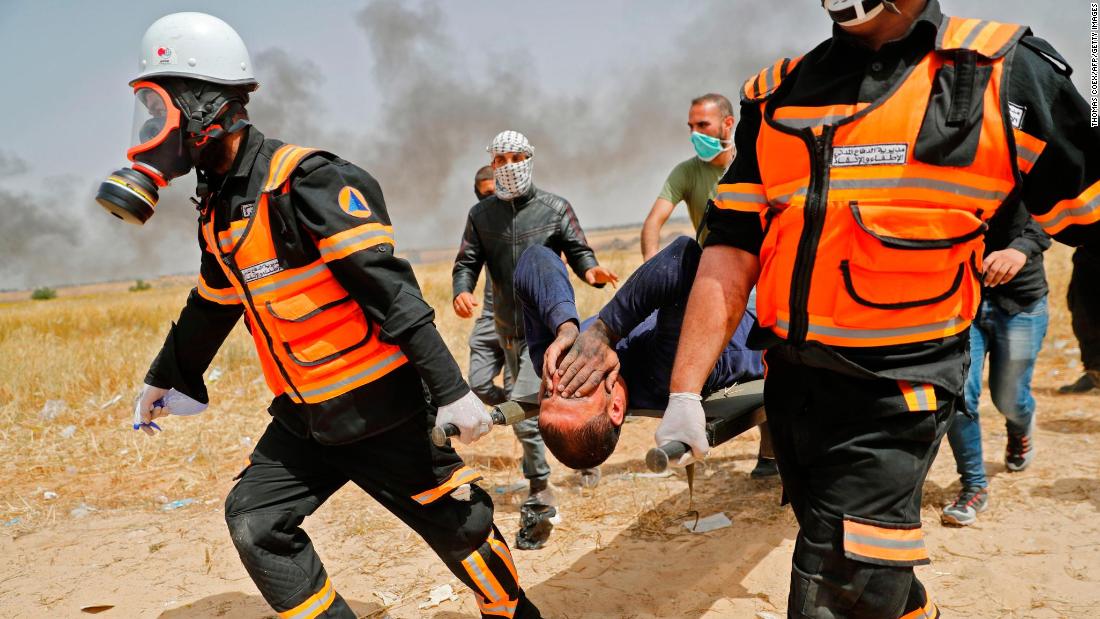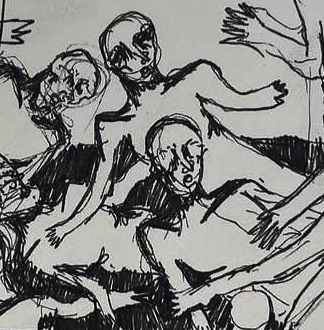
The collaboration of youths and organizations that help steer Gaza’s Great Return March has declared April 27 the “Friday of Rebellious Youth,” dedicated to the 40 protesters who have been fatally shot during the protests to date—more than half (27) of whom were 30 or younger. The latest fatality was journalist Ahmed Abu Hussein, 25, who succumbed to his wounds in a Jerusalem hospital Wednesday afternoon.
As the “march” heads toward the fourth Friday, organizers are gearing up for escalating Israeli violence, despite their own stated commitment to peaceful protest. The culmination will come May 15—the day after the United States officially opens its consulate in the hotly contested Jerusalem (it currently operates in Tel Aviv), the first day of the holy Muslim holiday Ramadan and the 70th anniversary of the Nakba, when more than 700,000 Palestinians fled or were forced to leave their homes to make way for the creation of Israel.

According to Khaled al-Batsh, head march organizer for the al-Awda camp in the Jabalia refugee camp, where Hussein lived, protesters will be urged on that day to move toward the border fence and uproot it. And while he acknowledges the response will likely be “more bloodshed” at the hands of Israeli soldiers, he also insists he and the other organizers will continue to demand that protesters remain peaceful.
“We will engage in peaceful activities that assert our right to return to our land, in contrast to the Israeli narrative, which casts us as violent,” said al-Batsh, adding that training workshops will be held in the tents along the border to teach the importance and strategy of nonviolent resistance.
Among the activities planned for the Friday of Rebellious Youth is the release of hundreds of balloons bearing pictures of the protesters killed to date.
Israeli officials argue that the protests are driven and controlled by Hamas, and thus believe they can stop the march by ramping up a campaign to bomb Hamas government offices, police stations and other facilities. However, while Hamas representatives indeed are involved in the organizing committee, al-Batsh and other members insist they do not control the activities.
"By continuing throughout these weeks (since the launch of the protests March 30), we the people have shown the world we will protest until we get our freedom and dignity," said Ahmed Abu Erteima, a member of the coordinating committee for the Grand Return committee.
The organizers are calling on the United Nations and its Human Rights Council to launch an investigation of the 40 murders to date, along with the estimated 5,511 injured. According to the UN Office for the Coordination of Humanitarian Affairs, the injured include 3,369 people treated in hospitals; the rest received first aid in the field. Most of those requiring hospitalization were hit by live ammunition.

In addition to journalists, medical personnel wearing clearly marked clothing have been targeted. The Al-Mezan Center for Human Rights reports that 79 medics have been injured to date, including five by live fire. Twenty ambulances also have been damaged. The center confirmed that the targeting operations were carried out in broad daylight without any obstructions that might have obscured the snipers’ vision, thus justifying the shots.
Abed Alrazaq Ibrahim, a 35-year-old paramedic, is one of those targeted. “At 14:30 on Friday, 6 April, while I was transferring the wounded east of Rafah, my colleagues and I were working on a number of people who had inhaled gas. After I got in the ambulance, I felt severe pain in my right leg, and put my hand where the pain was, behind my right knee. I found blood and realized I was bleeding profusely, so I pressed my hand on the wound and told my colleague Musa I was injured.”
The Fourth Geneva Convention Relative to the Protection of Civilian Persons in Time of War (1949) assures special protection for the evacuation and removal of wounded persons from the field and to persons in charge of providing physical and moral care.
“The occupation forces must be held accountable,” said the organizers in a collective statement. And they have the support of grassroots protesters. Khalid Hamodona, a 40-year-old protestor who sits in one of the camps with his wife and four kids, said, “We call on the International Criminal Court to open an investigation into the crimes of the occupation and we ask the international community to provide international protection for us as we assert our rights.”
First published in The New Arab.











